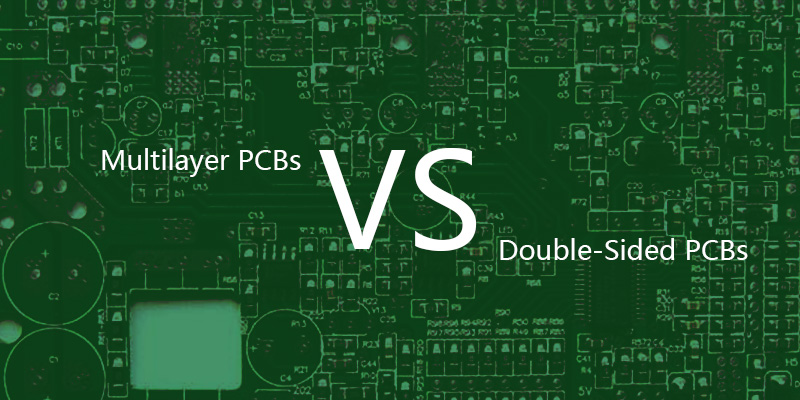The Key to High-Performance: Double-sided PCBs to Multi-layer PCBs
Multilayer PCBs are a kind of printed circuit board composed of alternating conductive graphic layers and insulating material laminated. The number of conductance pattern layers is more than three layers, and the electrical interconnection is realized through metallization holes. If double-sided PCBs are used as the inner layer, two single panels as the outer layer, or two double panels as the inner layer, two single panels as the outer layer, and interconnect with conductive graphics, it can be made of four layers, six layers of printed circuit boards, also known as multi-layer circuit boards.
The production process is to blacken the inner plate pattern first, add the semi-cured layer according to the predetermined design for lamination, then add a piece of copper foil on the upper and lower surfaces, send the press to heat and pressure, to obtain the “double-sided copper clad plate” that has been made of the inner plate, and then carry out CNC drilling according to the pre-designed positioning system. After drilling, the hole wall should be dented and contaminated, and then treated according to the process of double-sided printed circuit board manufacturing.
Contact Now
Compared to the two-panel production process, the main difference between multilayer panels is the addition of several unique process steps: inner imaging and blackening, lamination, dimpling and de-drilling contamination. The same processing process, in terms of process parameters, equipment accuracy, and complexity, there are also some differences. For example, the quality requirements of multi-layer plate hole wall are higher, and the quality requirements of double-layer plate hole wall are higher. In addition, the number of layers drilled in each multi-layer board, the speed and feed rate of drilling, and the difference between the double-sided PCB board. The inspection of finished products and semi-finished products is also more stringent and complex than the inspection of double panels.
Multilayer PCB boards are the addition of an inner layer board on the basis of double panels, usually 4 layers, 6 layers, 8 layers, or more layers. The double panel has only two layers of copper foil, one layer for wiring and the other layer for welding components.
Multi-layer panels have a higher wiring density than dual panels because they can be routed at multiple levels, thus reducing wiring crossover and interference. This makes multilayer PCBs suitable for complex circuit designs and high-density electronic devices.
The multiple-layer PCB board has good electromagnetic compatibility and anti-interference ability because the inner layer board can play a shielding and isolation role. The dual panel is relatively weak in this respect because there are only dual layers of copper foil.
Multilayer boards are more complex and costly than double-sided boards. The manufacture of multilayer panels requires more processes and materials, so its manufacturing costs are higher. At the same time, the design and wiring of multi-layer boards are also more complex, requiring higher technical requirements.
Multilayer circuit board has more advantages in signal transmission and power consumption control. Since the multilayer board can transmit signals and distribute power through the inner layer board, the transmission delay and power consumption of the signal can be better controlled.
In general, multilayer PCBs are more suitable for complex circuit design and high-density electronic devices than dual panels, but their manufacturing costs and design difficulties are correspondingly higher.
Due to the increasingly high functional requirements of electronic products, the structure of PCB boards is becoming more and more complex, from single layer to double layer and then to multiple layers, gradually “evolving”.



